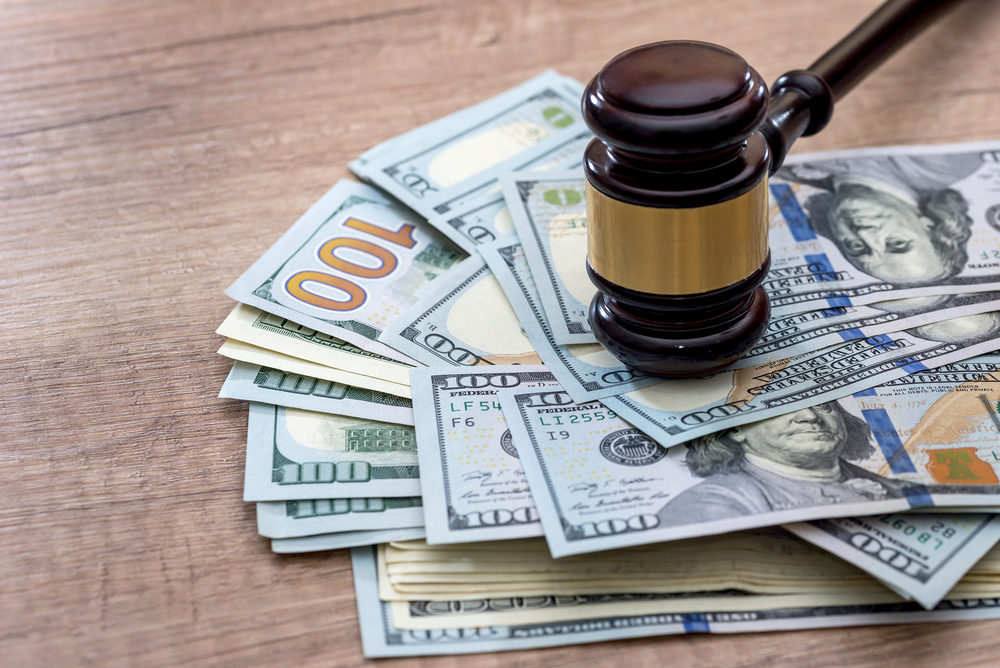
We have reached the top five civil justice stories of 2020. This is Part II of Legal Examiner’s annual compilation of the 10 most important civil cases of 2020, created by Virginia Beach, VA attorney-author Richard N. (Rick) Shapiro and his research assistants, a year end compilation tradition provided for Legal Examiner since 2012.
-
Roundup Litigation Continues as Bayer Refuses to Reach Amicable Settlement for Federal Claims
- Why It’s Big: If Bayer continues to refuse working on reaching an amicable settlement with claimants in various Roundup lawsuits, there is a good chance juries will get another opportunity to hold Bayer accountable for the corporate malfeasance associated with Roundup. For example, when juries were presented with evidence of what Roundup can do to people exposed on a regular basis to its toxic chemicals, they sided with the plaintiffs and awarded, on average, close to $50 million per plaintiff in damages.
- What We Learned: Bayer AG announced an $11 billion settlement to resolve thousands of Roundup weed killer lawsuits. However, Bayer later argued that more than 1,800 Roundup cases (out of roughly 3,700 lawsuits) were not “controlled” by the terms of the prior settlement agreement. This is a big reason why the litigation fight continues.
- Dig Deeper: https://www.insurancejournal.com/news/national/2020/11/03/589445.htm
-
Jury in Florida “Zoom-Based” Trial Awards $411 Million in Damages to a Veteran Injured in a Multi-Vehicle Accident
-
 Why It’s Big: This story is big for a number of reasons. First, the size of the jury verdict is massive. Second, the way the jury trial was conducted could be a harbinger of the future for civil litigation. The entire trial, start to finish, was conducted online via Zoom. The reliance on Zoom technology was driven by health concerns related to COVID-19, but it is an example of how technology can be utilized to potentially streamline the jury trial system, from jury selection through every phase of the jury trial process.
Why It’s Big: This story is big for a number of reasons. First, the size of the jury verdict is massive. Second, the way the jury trial was conducted could be a harbinger of the future for civil litigation. The entire trial, start to finish, was conducted online via Zoom. The reliance on Zoom technology was driven by health concerns related to COVID-19, but it is an example of how technology can be utilized to potentially streamline the jury trial system, from jury selection through every phase of the jury trial process. - What We Learned: The plaintiff in this case was Duane Washington, a former career Army sergeant, who was traveling home on his motorcycle via I-10 near Tallahassee when he encountered a 45+ vehicle pileup. Washington collided with a stopped truck that had no lights on in the emergency lane. This collision propelled Washington into the median and left him with severe, life-threatening injuries. He is now partially paralyzed as a result of the accident.
- Dig Deeper: https://www.prnewswire.com/news-releases/ben-crump-wins-historic-411-million-verdict-in-zoom-trial-301146704.html
-
Missouri Supreme Court Upholds $2.1 Billion Jury Verdict Against Johnson & Johnson in Talc Powder Lawsuit
- Why It’s Big: In the wake of a multi-billion-dollar jury verdict against Johnson & Johnson due to the cancer risks associated with asbestos-laced talcum powder, the company announced that it would stop selling its talc-based baby powder in the United States and Canada. Attorney Mark Lanier and his team of lawyers represented 22 women who contracted ovarian cancer, contending that J & J’s baby powder was adulterated with small amounts of carcinogenic asbestos fibers along with the talcum powder. Lanier offered an array of scientific expert witnesses, including testimony from experts who tested old baby powder samples, many of them purchased from collectors on eBay, to prove the trace asbestos adulteration, as many talc mining activities can inadvertently mine asbestos fibers together with talc minerals.
- What We Learned: Johnson & Johnson sought to have the multi-billion-dollar verdict thrown out by the Missouri appeals court. The appellate court instead affirmed the jury’s determination of liability in most regards, but reduced the total damages award from about $4.7 billion to $2.2 billion, holding: “We find the punitive damages awards assessed against Defendants, as adjusted, are not grossly excessive considering Defendants’ actions of knowingly selling products that contained asbestos to consumers.”
- There are more than 19,000 lawsuits currently pending in various courts claiming that J&J’s talc-based products caused ovarian or other forms of cancers.
- Dig Deeper: https://www.cnbc.com/2020/06/23/jj-loses-bid-to-overturn-baby-powder-verdict-but-damages-cut-to-2point1-billion.html
-
Department of Justice Cannot Intervene on President Trump’s Behalf in Civil Defamation Lawsuit
- Why It’s Big: The statement “this is abnormal” was used quite frequently throughout Trump’s single term in office. It certainly applies in this case. It is beyond bizarre for the United States Department of Justice to try and insert itself into a civil defamation claim, and seek to act as defense counsel for the President of the United States. The DOJ is designed to represent the citizenry of the US rather than function as the President’s personal law firm.
- What We Learned: U.S. District Judge Lewis Kaplan determined that a law protecting federal employees from being sued for acts done during their employment did not apply to the President of the United States. Judge Kaplan also highlighted the fact that President Trump did not make the alleged defamatory statements while acting within the scope of his presidential duties (employment) as President.
- Dig Deeper: https://www.reuters.com/article/us-usa-trump-defamation-lawsuit/u-s-cannot-shield-trump-from-rape-accusers-defamation-lawsuit-judge-rules-idUSKBN27C1ZS
-
US Supreme Court Rejects Trump’s Attempt to Overturn the 2020 Presidential Election
 Why It’s Big: The lawsuit filed by Texas’s Attorney General requested that the Supreme Court negate the vote totals only in key swing states–but not including Texas–was a failed coup d’état. Thankfully, the judiciary (a key pillar of our democracy and system of government) held firm and rejected these baseless and conspiracy-laden legal challenges attempting to secure Trump a second term, despite losing the electoral college’s necessary votes to President-elect Biden.
Why It’s Big: The lawsuit filed by Texas’s Attorney General requested that the Supreme Court negate the vote totals only in key swing states–but not including Texas–was a failed coup d’état. Thankfully, the judiciary (a key pillar of our democracy and system of government) held firm and rejected these baseless and conspiracy-laden legal challenges attempting to secure Trump a second term, despite losing the electoral college’s necessary votes to President-elect Biden.- What We Learned: In a few brief sentences, the Supreme Court stated it would not consider the case for procedural reasons, primarily because Texas lacked standing to even challenge the voting outcomes in other states.
- Dig Deeper: https://www.cnn.com/2020/12/11/politics/supreme-court-texas-trump-biden/index.html

Rick Shapiro has practiced personal injury law for over 30 years in Virginia, North Carolina, and throughout the Southeastern United States. He is a Board-Certified Civil Trial Advocate by the National Board of Trial Advocacy (ABA Accredited) and has litigated injury cases throughout the eastern United States, including wrongful death, trucking, faulty products, railroad, and medical negligence claims. During his three-decade career, Shapiro has won client appeals before the VA Supreme Court, VA Court of Appeals, NC Supreme Court, SC Supreme Court, WV Supreme Court, TN Supreme Court, and three times before the United States Court of Appeals for the Fourth Circuit, underscoring Shapiro’s trial achievements. In addition, he and his law firm have won settlements/verdicts in excess of $100 million. His success in and out of the courtroom is a big reason why he was named 2019 “Lawyer of the Year” in railroad law in U.S. News & World Report's Best Lawyers publication (Norfolk, VA area), and he has been named a “Best Lawyer” and “Super Lawyer” by those peer-reviewed organizations for multiple years. Rick was also named a “Leader in the Law, Class of 2022” by Virginia Lawyers Weekly (total of 33 statewide honorees consisting of lawyers and judges across Virginia). And in September 2023, Rick was selected as a recipient of the National Board of Trial Advocacy (NBTA) 2023 President’s Award. Although many nominations were submitted from across the country, Rick was just one of eight attorneys chosen by the prestigious National Board which certifies civil trial attorneys across the U.S. Rick was also recently named to Virginia Lawyers Weekly 2024 Virginia’s Go To Lawyers Medical Malpractice. The attorneys awarded this honor are nominated by their colleagues and chosen by a panel from the publication.









Comments for this article are closed.